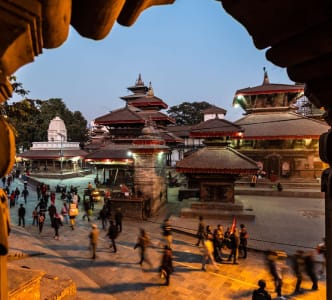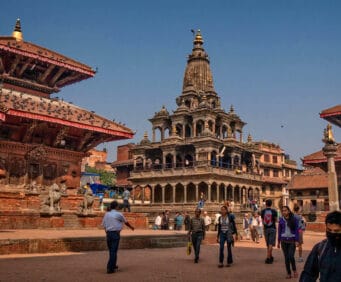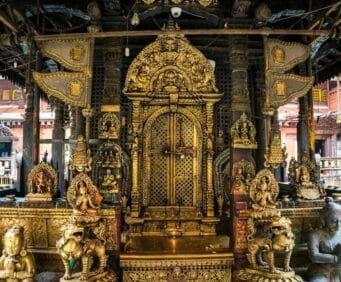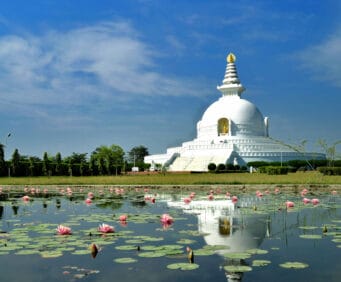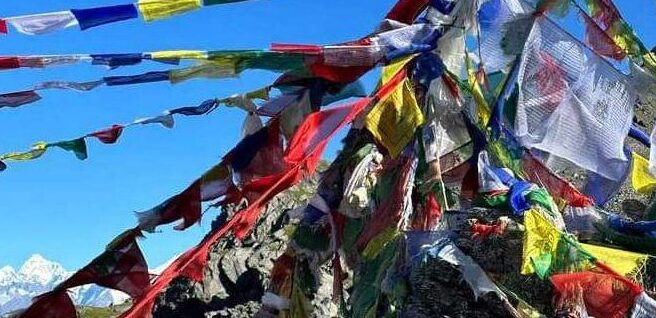
Best time to go on Helambu Trek
28th July, 2024 - Posted By: Himalayan AbodeThe thought of trekking in Nepal will automatically lead you to the Everest and Annapurna treks. However, there is Helambu Trek for those who want to have an extraordinary enjoyable trek that is not too crowded but has similar beautiful scenery. Positioned to the northeast of Kathmandu around 1,880m and 1,740m above sea level, Helambu is one of the virgin areas for trekking which is suitable for first-timers and those who have been trekking for a long time. Explore here’s a detailed guide on the best time to go on Helambu Trek.
Introduction to Helambu
Helambu is widely known for its beautiful sceneries, and cultural homesteads, and relatively short and accessible from the country’s capital. The trek also passes through an area that is inhabited by the Yolmo people who have their way of life which originates from the interaction of the true blend of the Tibetans and Nepalese.
They offer trekking through Helambu’s resourceful forests, fields, and suchlike villages and so, the opportunities both in terms of nature and culture are dynamically different.
Getting There
The hike commonly departs from Sundarijal, which is just a one-hour drive from Kathmandu. Starting at Sundarijal the trail goes up to Shivapuri National Park which is home to many animals and a reserve of greenery. The city’s typical sounds gradually fade as one moves up the utility paths, giving way to the sounds of nature.
Highlights of the Helambu Trek
1. Shivapuri National Park
The early section of the trek passes through Shivapuri National Park which offers you an opportunity to view some of the animals inhabiting the area and also plants. The dense forest area should be of interest to bird-watchers especially while the chances of encountering the park wildlife are slim though possible.
2. Chisapani
The first attractive halt is Chisapani for those who are interested in seeing the views of the Langtang and Jugal Himal. This small village is an ideal place to rest and get used to the altitude as well as to appreciate sheers overlooking the area with the snowy mountains.
3. Kutumsang
Further walking, there will be Kutumsang, the beautiful Indigenous community houses, and terrace fields. The area from here to Thadepati has some nice trails; the rhododendron forest and the distant mountains.
4. Thadepati
Thadepati is one of the highest treks on the trek and the view from here is a raving beauty. On the day when the sky is clear, one can see the Gauri Shankar, Dorje Lakpa, and sometimes even the peak of Everest.
5. Tarkeghyang and Sermathang
It then drops to Tarkeghyang which is famous for its old monasteries and genuine Yolmo people. While from Tarkeghyang the way toward Sermathang is rather easy with beautiful forests and charming villages on the way.
6. Melamchi Pul Bazaar
The trek finishes at Melamchi Pul Bazaar, a active village by the side of Melamchi River. Here, you can arrange for a bus that will take you back to Kathmandu bringing your exciting tour to a perfect conclusion.
Cultural Immersion
However, the first and one of the most special things about the Helambu Trek is the possibility to encompass the local people. The Yolmo people are very friendly and on any occasion, there will be ample opportunities to interact with them and come to know them better.
Wanting to see the monasteries and to watch dances and other forms of native practice makes this trekking an authentic experience that cannot be gotten elsewhere because many of the swiftly commercialized trekking areas remove the cultural aspect of the country.
Practical Tips for the Trek
- Best Time to Visit: The best times for the Helambu Trek usually include March to May, which is spring, and September to November which is autumn. It is mild at this time and as expected the climate is usually relatively clear throughout these months.
- Permits: You will also be required to show your TIMS card which is Trekkers Information Management System and also the Shivapuri National Park entry fees.
- Accommodation: There are tea houses and lodges on the trail for accommodation, though the services are very simple. A sleeping bag is recommended to have particularly in winter but at any period of the year, it can be handy to have one.
- Preparation: It therefore may be noted that though the Helambu Trek may not be as tough as other treks in the Nepali terrain, the trekkers do need to be in good physical condition. Remember to aclimatize yourselves properly and drink enough water.
Some of the aspects to think through when going for the Helambu Trek.
The Helambu Trek is one such thrilling adventure that a trekking lover would like to have a taste but like every other trekking, one should prepare him or herself and be aware of certain facts. Here are some key things to consider to ensure a safe and enjoyable journey: Here are some key things to consider to ensure a safe and enjoyable journey:
1. Physical Preparation
Fitness Level
- Training: It is recommended that you begin exercising several months to the trek. Concentration on activities that strengthen the heart, and muscles and practicing hiking to increase one’s endurance, and strength in the legs.
- Acclimatization: Despite the Helambu Trek not being very high setting up a base for levels higher than this provides a good guide on acclimatization to avoid the danger of altitude sickness. Climb slowly and do not rush your body to get to the top or the next level.
2. Proper Gear and Packing
Essential Gear
- Footwear: Ensure a hiker is protected from the harsh terrain by providing a good pair of waterproof hiking boots. Wear jackets, shoes, and sleeping bags before the actual trek to reduce the chances of blisters forming on your skin.
- Clothing: Layering is key. Bring moisture control base wear, warm mid-wear and a compact water and wind-resistant outer wear. Do not leave hat, gloves, and warm socks behind.
- Backpack: Select a good buttock backpack and that which you find comfortably fitted to your back. certainly, it should be large enough to accommodate all the equipment that you intend to carry but not too large either.
Other Essentials
- Sleeping Bag: However, tea houses do provide blankets it is highly advised to carry a good quality & warm sleeping bag that can survive the freezing temperatures.
- Trekking Poles: Material: good for walking on irregular terrains, and gentle on knees whenever they are used in holding the weight of your body during downhill motion.
- First Aid Kit: Basic medications that should be carried are pain relievers and antihistamines, blisters, and altitude sickness tablets.
- Water Purification: Water purification such as a SteriPEN, purification pills or portable filter for potable water.
3. Health and Safety
Altitude Sickness
- Symptoms: Some of the signs it is crucial to notice include; headache, nausea, dizziness, and shortness of breath. If symptoms worsen continue to this step and go to a lower altitude as soon as possible.
- Hydration: Take a lot of water on you for the whole period of the trek. Alpine sickness worsens if one is dehydrated.
- Diet: Take a lot of starch to make sure that the energy level of the body is constantly high. Do not consume alcohol and caffeine as they are diuretics hence they make one dehydrated.
Local Health Concerns
- Vaccinations: Ensure that you have read and understood the travel advisory for the country and if you require any immunizations before entering the country of Nepal. Hepatitis A, Typhoid, and Tetanus are usually advised.
- Travel Insurance: When organizing and planning your trekking adventure, your travel insurance must cover trekking at high altitudes and also evacuation.
4. Environmental and Cultural Respect
Environmental Responsibility
- Leave No Trace: Adhere to the “Leave No Trace” policy; pack out what you bring in, do not use plastic products, and please the planet.
- Stay on Trails: Avoid going off the main track so that one does not leave a negative environmental impact or get lost.
Cultural Sensitivity
- Local Customs: Cultivate etiquette and best practices of culture and traditions of the respective country. Men should not wear shorts and T-shirts while ladies should not wear revealing clothes or very tiny shorts and tops; do not take pictures of people or religious buildings without permission.
- Support Local Economy: Purchase food and other products from the locals and also eat in locally run accommodations to boost the economic status of the local people.
5. Weather Considerations
Seasonal Weather
- Spring (March to May): Suppression of the occurrence implies moderate temperatures during the time in addition to the blooming of the Rhododendrons. Perfectly suitable for trekking with the clear sky most of the time.
- Autumn (September to November): It turns out to be a favorable season to trek since the skies are clear and the weather is good. As with other symptoms, the disease is characterized, first and foremost, by chronically low body temperature or gradual hypothermia, especially when it rises to higher altitudes.
- Winter (December to February): The chance of snow at higher altitudes and night temperatures will be low. Recommended for individualism lovers and those people who are ready to live in an icy hole.
- Monsoon (June to August): Some challenges include; cases of slanting or slippery when it rains, and leech presence. Less ideal for trekking.
6. Communication and Navigation
Connectivity
- Mobile Networks: Currently some parts of the country are faced with network coverage mainly on mobile networks. Take a local SIM card if you have one or find a local store to buy a local SIM card to avoid this.
- Maps and GPS: Take a map and a GPS with you, or have them in the car. It helps to acquaint with the route before starting so that no much time is wasted on consultations.
7. Financial Considerations
Budgeting
- Costs: Food, accommodation, permits, and tipping for your guide/porters. It is advisable to have cash with you since there are very few ATMs within the trail area.
- Permits: Make sure you have a TIMS permit and a Shivapuri National Park entry permit for the trekking.
Planning on the Best time to go on Helambu Trek
There are, therefore, certain factors with which the best time to trek the Helambu region should correspond. Here’s a detailed guide on the best seasons to undertake the Helambu Trek, along with their advantages and challenges:
1. Spring (March to May)
Advantages:
- Pleasant Weather: Trekking during spring can be good since the temperatures are mild and the weather relatively upright, unlike the other seasons. It does not get very hot during the day and nights are not very chilly either.
- Flora and Fauna: The trails contain flowers such as rhododendrons making the area colorful during their time of blooming. The other popular activity best done in this season is bird watching.
- Clear Views: March and April frequently give rather clear weather and a perfect view of the surrounding mountains.
Challenges:
- Popularity: Trekking is most common during spring hence expect some parts of the trail and the available tea houses to be more congested.
2. Autumn (September to November)
Advantages:
- Stable Weather: It is on the same note that autumn is esteemed as the best season in Nepal, especially for trekking due to relatively stable weather. The rains wash away the dust and haze and one can see a clear and clean environment.
- Clear Skies: This season is the most favorable since the sky is incredibly clear and the weather is relatively cool for a very good perspective of the great Himalayan range.
- Festivals: The manufacturing sector peaks in the autumn season as major Nepali festivals like Dashain and Tihar are in this season.
Challenges:
- Crowds: Just like spring, autumn is also a preferred season for trekking and thereby, it is also an ideal season for Nepali healthcare products. Look forward to more individuals on the tracks, and more occupied lodges.
- Cooler Nights: During the day the weather is quite pleasant, although at night especially near the mountains the climate can be quite cold.
3. Winter (December to February)
Advantages:
- Solitude: Winter treks are good because they allow trekkers to be alone and enjoy the silence and there are few trekkers during this time.
- Snow-Covered Landscapes: This trail and the mountain ranges along the trail are snowy giving the scenery a look of winter.
Challenges:
- Cold Temperatures: Challenges for winter trekking, especially at very high altitudes where the temperatures are particularly low.. Appropriate clothing and equipment as well as the right preparations for the cold climate is compulsory.
- Trail Conditions: Snow and ice will sometimes cover some of the trails and make them difficult to travel on; the paths can become steep and may kill the ability to reach higher ground.
4. Monsoon (June to August):
Advantages:
- Lush Scenery: This breeds the monsoon season in the most beautiful way possible as it turns more or less all landscapes a lush green. Waterfalls and streams are at their best.
- Fewer Crowds: During the monsoon, the number of trekkers on the trails is considerably less as compared to other seasons making the experience relaxed.
Challenges:
- Heavy rainfall causes the monsoon to occur, forming thick fog and transforming the trails into muddy and slippery paths. It also stated that leeches are equally plentiful.
- Limited Views: Tropical Cordilleras are mainly located in the humid region and many times, the cloud cover as well as rain hinders the view of mountains.
- Landslides: Greater chances of landslides and, in some regions, floods.
Conclusion
The best time for the trek to Helambu is from March to May in the spring season and from September to November in the autumn season. These periods provide the best opportunity for great weather, good visibility, and a generally pleasant hike during the day. But if one wishes to trek alone the winter months may also be a good time because of the colder weather.
However, the monsoon season is relatively less preferable because of the problems that arise during transportation because of the heavy rains and bad road conditions namely; the muddy pathways but it has its advantage of green scenery. Decide the season, that is more suitable to your taste, and pack aptly to have the best of your Helambu trekking experience.
Recent Posts
